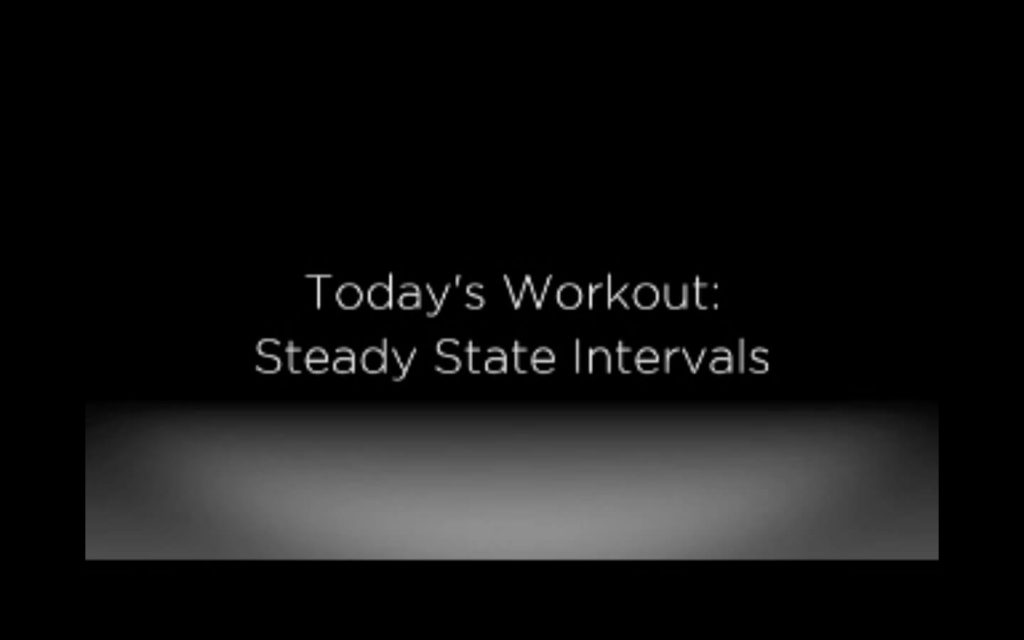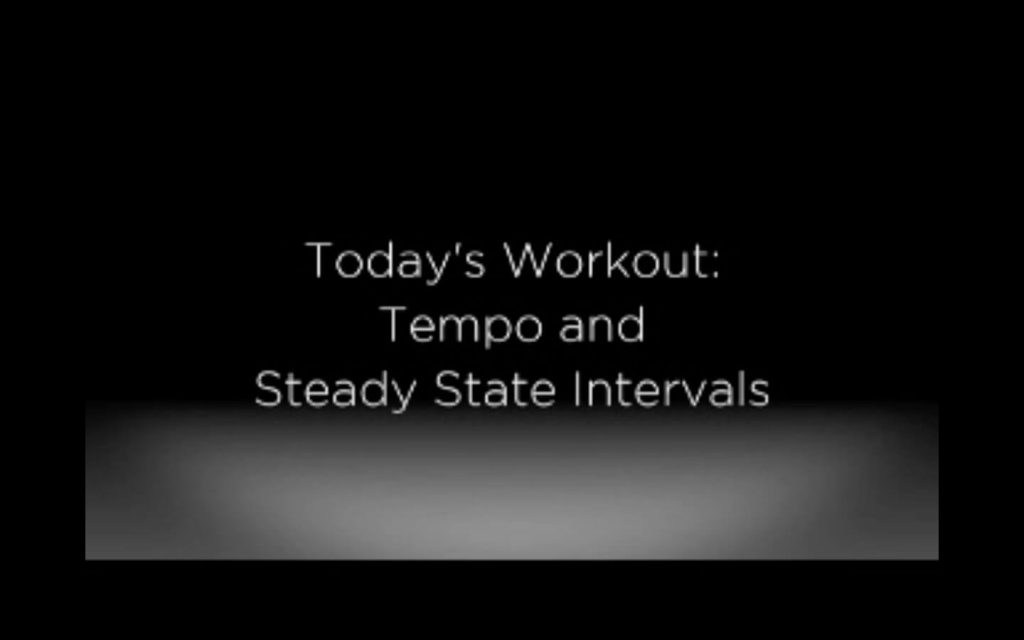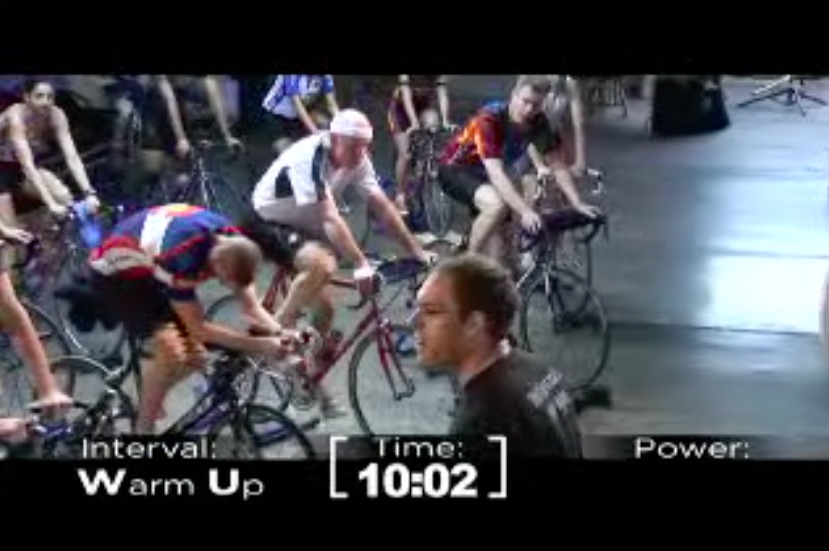CTS Progressive Power Classes 5 and 6 target aerobic conditioning. The workouts hit your Tempo and Steady State ranges. These are the ranges where riders spend much of their time out on the road or trails. Let’s dig in to Classes 5 and 6.
Editorial Note: If this is the first CTS Progressive Power article you are reading, as an FYI, it is a part of a series. The initial introduces the CTS Progressive Power interval training series. The other articles are as follows:
- Class 1 – the CTS Field Test
- Class 2 – Field Test Verification
- Classes 3 and 4 – Driving Your Cadence and Muscular Endurance
Class #5 – Steady State Intervals

Overview
- 10 minutes warmup
- 2 1 minute Fast Pedals, 1 minute recovery after each
- 3 10 minutes Steady State, 4 minutes recovery after each
- 1st Steady State Effort: Middle of your range (if possible) (cadence at 90-95 rpms)
- 2nd/3rd Steady State Efforts: Top of your range (if possible) (cadence will vary – 2 minutes at 85-90 rpms, 2 minutes at 90 rpms, 2 minutes at 95 rpms, 2 minutes at 85-90 rpms, and finish at 2 minutes at 95 rpms)
- 10 minutes cooldown
Interval Description
This session keeps you below your lactate threshold, but close to it. It is a classic workout that revs up the aerobic engine. There are no new interval types.
- Remember to perform Fast Pedals at a cadence of 110 rpms and above. Focus on good pedal mechanics. Slowly build your cadence as you begin. Although your heart rate will climb, don’t worry about focusing on a particular intensity range. Check out the article on Class 4 for The Hub’s tips on Fast Pedals.
- As a review, Steady State intervals are performed slightly below your lactate threshold. Take a look at the article summarizing Class 2 for more.
Tip: It can be tricky to keep your heart rate within your Steady State range while abiding by the prescribed cadence of each effort above. Gearing is key. Ultimately, our non-expert opinion is that keeping within your range is more important than finding the most ideal gear to stay within the cadence window.
Class #6 – Tempo and Steady State Intervals

Overview
This workout is a mix between Tempo and Steady State intervals. The first few classes after the Field Test Verification focus on muscular conditioning. Your muscles take up a bulk of the load. This workout builds on Class 5, putting more load on your aerobic system.
- 10 minutes warmup
- 2 2 minutes Fast Pedals, 1 minute and 30 seconds recovery after each
- 2 10 minutes Tempo intervals followed directly by 6 minutes Steady State intervals, no recovery between the two sets (cadence at 70-75 rpms)
- 10 minutes cooldown
Interval Description
Feel free to skip this recap on the intervals hit in prior classes:
- The warmups, recovery periods, and cooldowns in the CTS Progressive Power classes are always performed at what we call a soft pedal or light spinning pace. Find an easy gear and spin the pedals at 90 rpms and above.
- Take a look at above at the description of Fast Pedals and Steady State intervals.
The following is the only new interval-type from Class 6:
- Tempo intervals. The key to building endurance and aerobic base. The efforts are well below lactate threshold, but you will still accumulate lactate. As you will notice, Tempo efforts are longer than other intervals, and you will be pushing bigger gears at a lower corresponding cadence. Typically 70 to 75 rpms. Try to stay seated for these.
Tip: The Hub finds indoor Tempo intervals to be the most difficult to stay within the prescribed intensity range. The Hub finds it easier to stay within the Tempo intensity range at a higher cadence (75-85 rpms). We used to stress about this, but take the approach that the intensity range target is more important than the cadence range. We, nonetheless, try to stay on target by alternating between cadences. Start at 70-75 rpms, switch to 75-85 rpms, and alternate back and forth to stay within your prescribed range.
Tip: Another difficulty with Tempo intervals (that corresponds to the last tip) is what we call heart rate lag. This will only apply to those that are training exclusively with heart rate. As indicated earlier in the series, training with heart rate only isn’t perfect. As a general matter, we find that our heart rate response lags behind effort output. It takes a handful of seconds or more to see a corresponding heart rate increase or decrease when adjusting effort. This is common to most interval workout types, but we see the most lag when performing Tempo intervals. We try not to get too stressed about it, and keep our heart rate as close as possible to the prescribed range.
That’s it for CTS Progressive Power Classes 5 and 6. Next in the series are Classes 7 and 8. These classes continue to develop the aerobic engine. Enjoy it because Class 9 starts your journey on increasing power at VO2 max.
We hope you keep up-to-date on all The Hub’s content by following us on social media (links on the top and bottom of this page), and by entering your info into the Newsletter signup (to the right and bottom). Until next time, keep pushing those pedals!
